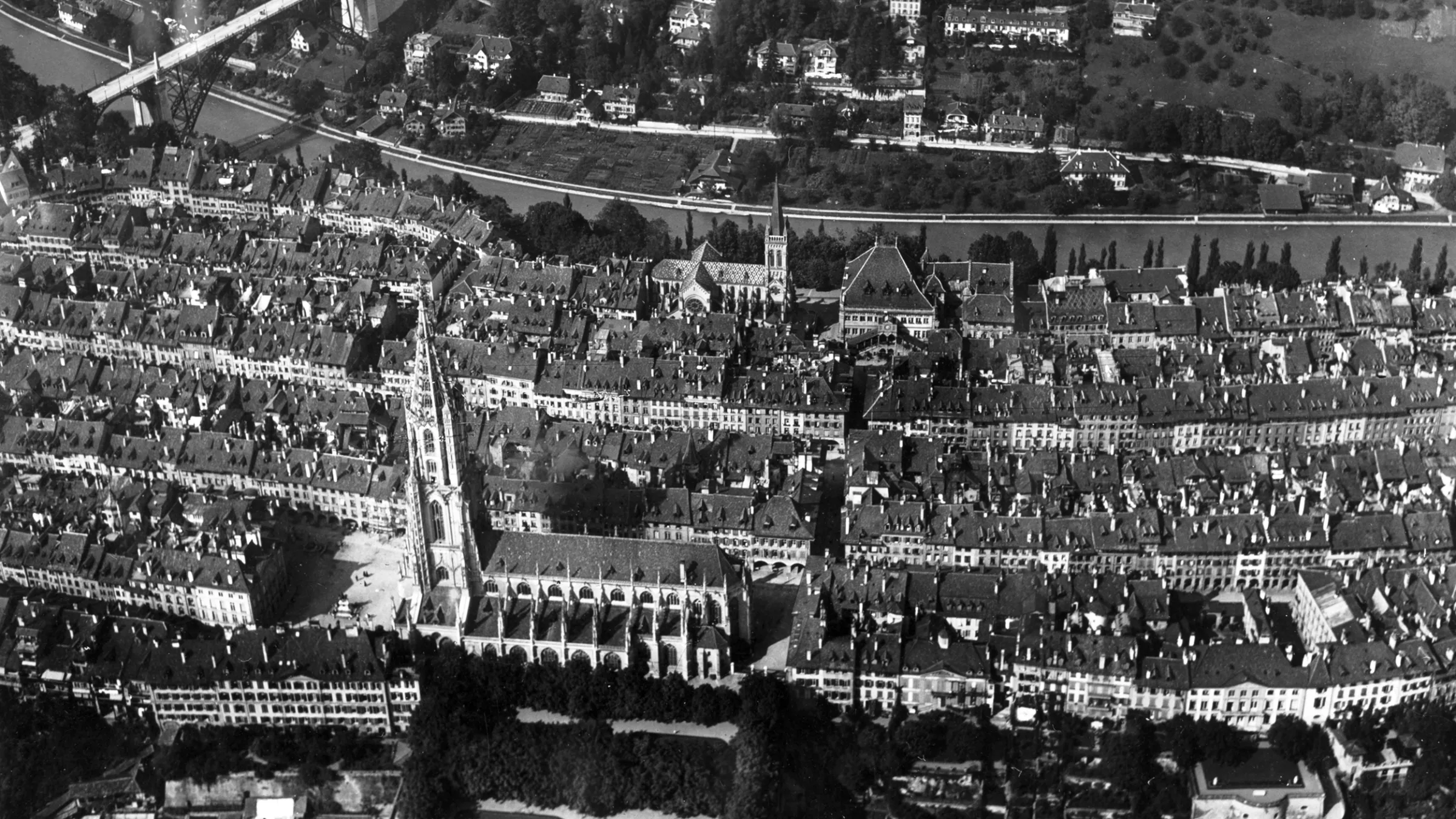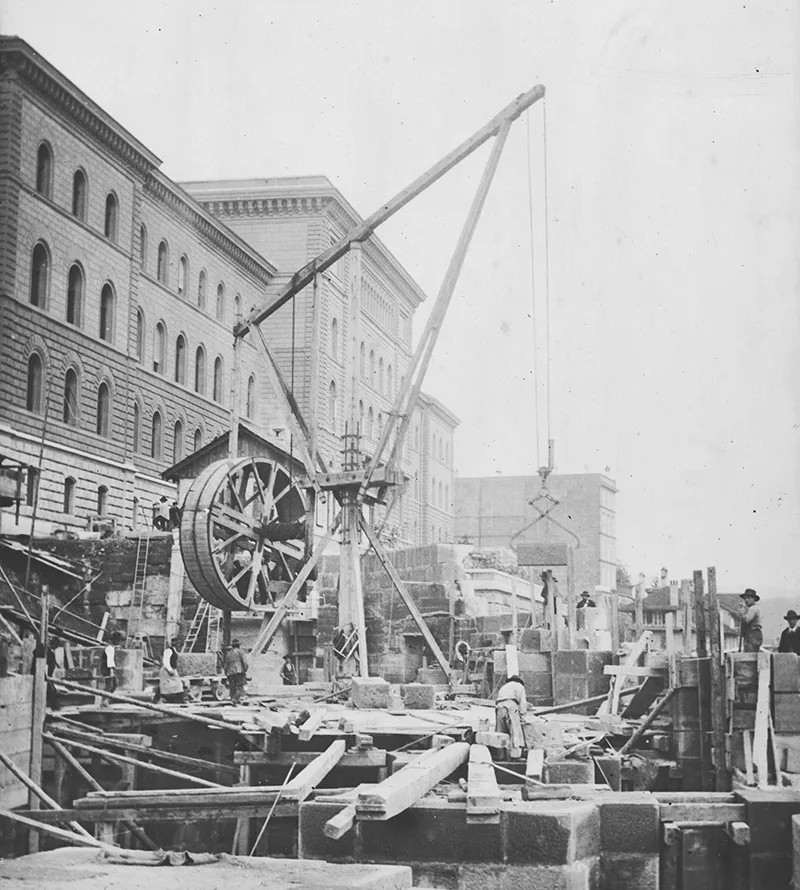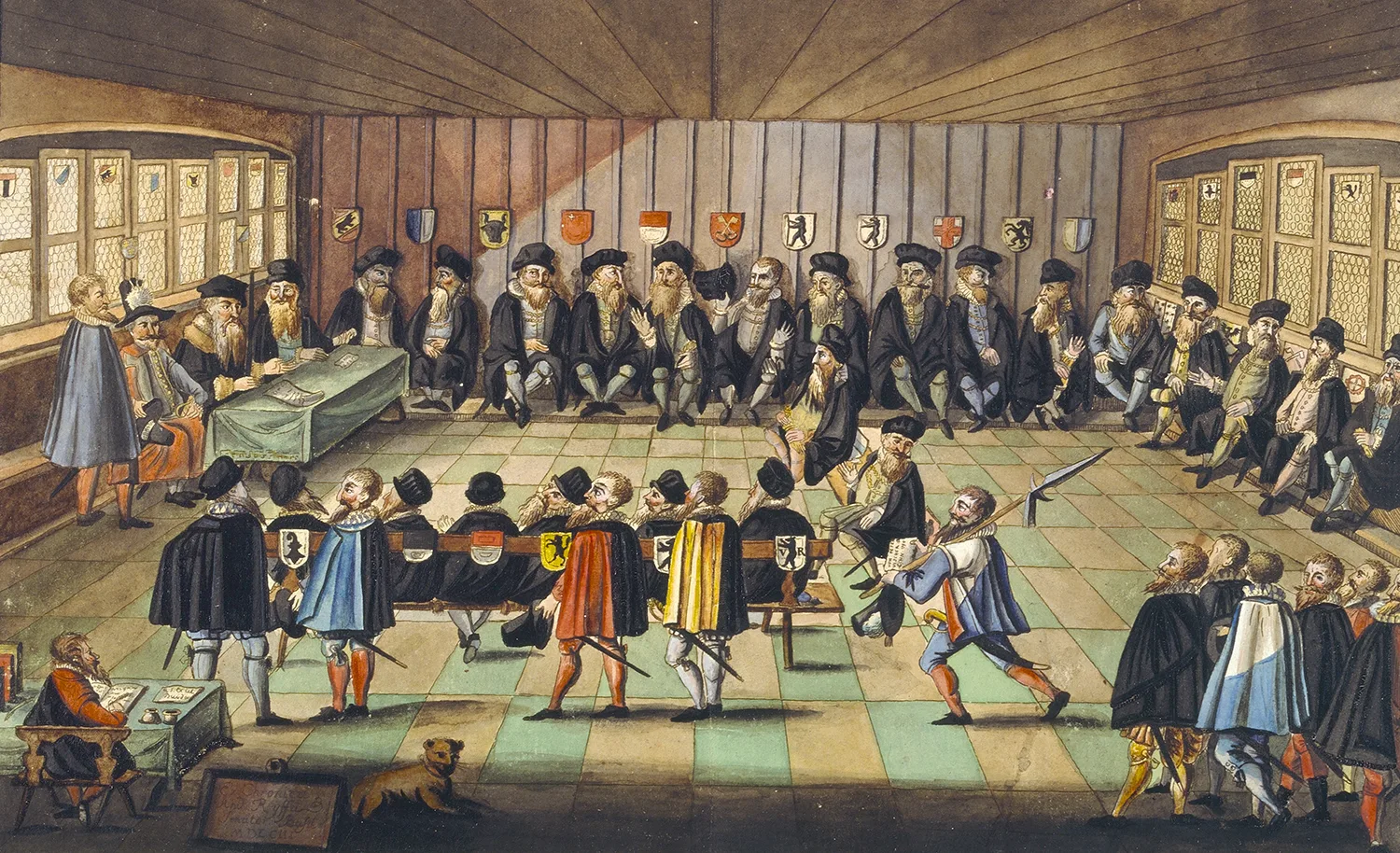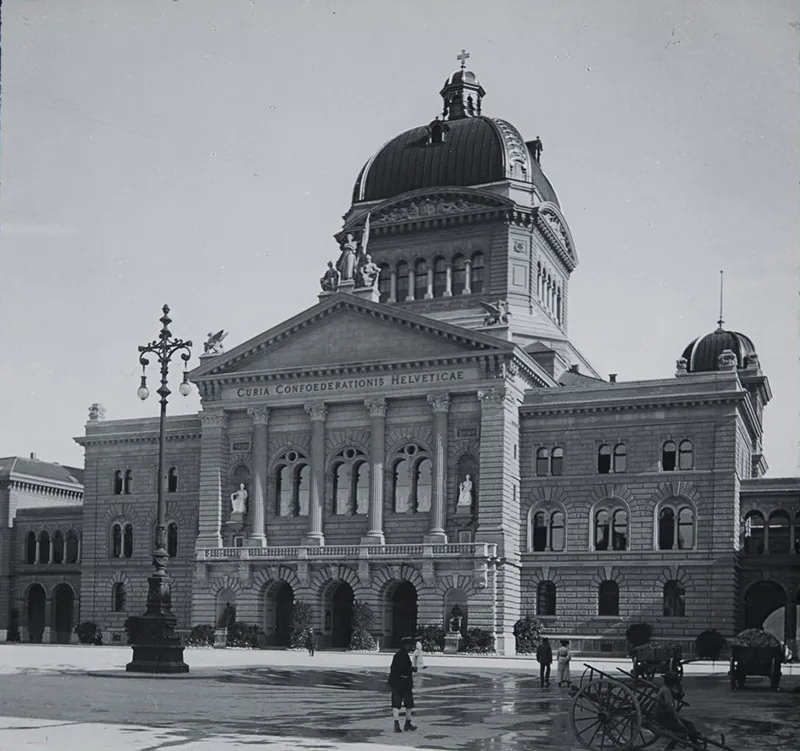
Swiss National Museum
Switzerland – a country without a capital
At the end of 1848, Bern became the seat of the country’s government. Switzerland’s federal structure meant that for this to happen, some discussions were necessary.
It is wrong to describe Bern as the ‘capital city’. Most Swiss people know that. Strictly speaking, even the usual designation ‘federal city’ (German: ‘Bundesstadt’; French: ‘Ville fédérale’; Italian: ‘Città federale’) is incorrect. The Federal Constitution of 1999 contains no statement to that effect. Only at legislative level (Art. 58 of the Government and Administration Organisation Act of 1997) is it stipulated that Bern is the seat of the Federal Council, the ministries and the Federal Chancellery. And the Act of Parliament of 2002 (Art. 32) names Bern as the seat of the Federal Assembly. Until 1848, it was even debated whether Switzerland needed a single ‘capital city’, or whether a rotation system involving several different places might not be more appropriate.
If we look beyond our own borders, we can see that elsewhere in Europe, those countries with smaller populations often have high-profile capital cities – Copenhagen, Brussels, Lisbon, Vienna, Prague and Budapest, for instance. This has to do with their monarchical tradition. Nevertheless, the comparatively humble position of the city of Bern is noteworthy. In terms of population, today it is only the fourth-largest city in Switzerland, well behind Zurich, Geneva and Basel and only just ahead of Lausanne. How did this peculiar situation come about?

Construction of the terrace in front of the Federal Palace (Bundeshaus). Photo taken around 1895.
Burgerbibliothek of Bern
Itinerant regencies
Until 1798, the Confederation of the 13 cantons got along without a capital city. The representatives of the loose confederation convened twice a year for a meeting known as a Tagsatzung. Since 1712, this Tagsatzung had taken place in the country towns of Baden and Frauenfeld. The seat of the influential French legation was in Solothurn. By contrast, the countries of Europe had had capital cities since the 16th century at the latest – even if there were sometimes tensions between the ruler’s place of residence and the capital city. The German Reich was an exception. The fixed seat of government had definitively replaced the itinerant monarchy, which had exercised power into the Late Middle Ages.

The Tagsatzung of 1531 in Baden.
Swiss National Museum
Four capitals in five years
It was only the formation of the ‘one and indivisible republic’ in Helvetia in 1798 that called for a capital city on the French model. Since Bern had put up a resolute military defence against the French invasion, for the invaders it was out of the question for the capital to be the principal town of what had up to then been the most powerful city state north of the Alps. In the fledgling Helvetic Republic the honour went, in 1798, to Aarau – for all of four months. It soon became clear that there was not enough space in the little country town, and the capital was moved to Lucerne. But in May 1799, faced with the War of the Second Coalition, the government fled to Bern and in September 1802 it took refuge for a short time in Lausanne, where it felt better protected after the withdrawal of French forces.
The Act of Mediation of 1803 once gain avoided naming a definitive seat of government. With the title rotating among Freiburg, Solothurn, Basel, Bern, Zurich and Lucerne, six different cities were given the honour. From 1815, this number was reduced to just Bern, Zurich and Lucerne, for two years each.

The dome of the Federal Palace under construction. Image from 1900.
Burgerbibliothek of Bern

On a postcard from 1908, the Federal Palace is called the ‘Berner Bundespalast’.
Swiss National Museum
Lucerne? Zurich? Bern, or even Zofingen?
When the newly elected National Council and Council of States sat for the first time on 6 November 1848 in Bern, the location of the last Tagsatzung, the new federal state still had no capital. The issue was deliberately omitted from the Constitution, and was left to the Councils. The crucial debate took place on 28 November. Even though Bern, Zurich and Lucerne were the main contenders, there were also votes in favour of smaller towns such as Aarau and Zofingen. One clear signal of a strong current of federalism: no major cantonal capital should be allowed to be the seat of the nation’s government! Zurich failed to win a clear majority of the votes from eastern Switzerland, and so Bern moved into the lead in the first round of voting: 58 National Council members and 21 Council of States members voted for Bern, while Zurich garnered 38 votes, and Lucerne 9.
With honour comes responsibility – lukewarm enthusiasm in Bern
The new Swiss Confederation had only modest means in 1848 and, with the honour of becoming the seat of government, the financial burden passed to Bern. The city was required to provide premises for government, parliament and administration. The radical cantonal government was enthusiastic about the decision of the Federal Assembly. The wealthy citizenry distanced itself from the matter, and declared that the federal seat was for the municipality to deal with. And the conservative city authorities had a tough time in the municipal assembly on 18 December, winning barely half the votes in favour of the cause: 419 Bernese citizens accepted the honour and the obligations, and 313 opposed it. On 27 December 1848, the Federal Assembly definitively named Bern the seat of government.
Government, parliament and administration operated out of makeshift premises until, in 1857, the current Bundeshaus West, or Federal Palace, was completed at a cost of two million francs. To cover the cost, Bern had to borrow money and impose an extraordinary tax. In 1874, the city bought its way out of further obligations for 500,000 francs, and handed over the building to the Confederation.

At the beginning of the 20th century, people still referred to the ‘Bern Bundesregierungspalast’ (Bern Federal Government Palace), as on this school geography slide from about 1930.
Swiss National Museum
Consolation prizes
Bern subsequently received the Federal Archives and the National Library. In an effort to achieve a balance, in 1855 the Swiss Federal Institute of Technology (ETH) and in 1891 the National Museum were moved to Zurich. In 1874, Lausanne got the Federal Supreme Court. Lucerne has been the location of the Federal Insurance Court (now the Social Law Division of the Federal Supreme Court) since 1917 and of the Swiss National Accident Insurance Fund since 1918. For Lucerne as the centre of Catholic Switzerland, in 1848 it was even proposed that, as a consolation prize, the city be made the seat of an archdiocese… The decentralisation has been further intensified since the 1990s. The Federal Statistical Office, Federal Office of Communications and Federal Office of Housing are now based in Neuchâtel, Biel and Grenchen. The new Federal Criminal Court has been based in Bellinzona since 2004, and the Federal Administrative Court has been in St Gallen since 2012.
Result: Switzerland, a polycentric country
Although Switzerland plays a disproportionately major role internationally in terms of the economy and to some extent also with regard to politics, it has a modest ‘capital city’. There are four main reasons for this:
1. Bern is small, and the aim has always been to keep it that way: the Swiss political system pursues a very marked degree of federalism and distributes courts, universities, museums and administrative bodies throughout the regions of the country. In doing so, it has also paid careful attention to the language areas.
2. With the selection of Geneva as the headquarters of the League of Nations (1919), Bern lost some of the international clout it had managed to retain thanks to Switzerland’s neutrality in the 19th century – with the establishment of organisations such as the International Telegraph Union in 1868, the Universal Postal Union in 1874, the Inter-Parliamentary Union in 1891 and the International Peace Bureau in 1892, which was awarded the Nobel Peace Prize in 1910. The choice of Geneva as the second UN headquarters in 1948 cemented that city’s role as a platform for international relations.
3. During the 20th century, Bern lost economic power compared to Basel and Zurich. Resident larger companies were taken over (Wander, Tobler, Volksbank). And with the decision not to host the intercontinental airport, which was then built in Kloten, economic dominance passed definitively to Zurich.
4. Probably in connection with that, in the media sphere too a very prominent market leadership emerged in the city of the Limmat. Today, Zurich is the press, radio and television centre for the entire German-speaking area of Switzerland.



